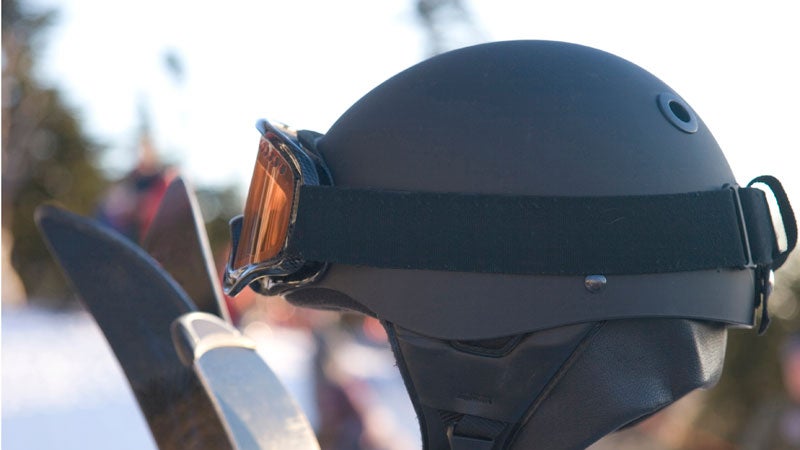Lots of things can go wrong when you’re skiing. Face it, you’re sliding fast down a slippery surface on narrow planks with sharp metal edges, surrounded by hazards such as trees and other skiers, who may or may not be in control of their actions. If ��you crash—whether you’re hucking and jumping, speeding through moguls, or just trying to get through your run—you can reduce the risk of danger by wearing a helmet.
Pro Tip:
“Peek under your helmet liner for the ASTM sticker. Without ASTM certification, you have no guarantee what impact your helmet can take.” —Lindsey Johnson, helmet category product manager at Smith��
 After a long period of stasis, helmet design is about to get much better. Read: “Building a Better Helmet.”
After a long period of stasis, helmet design is about to get much better. Read: “Building a Better Helmet.”Ski helmets protect your head from impact. But in order to do that job, a helmet must be sized correctly, worn correctly, and certified to meet minimum safety standards.
Helmet Fit
“Helmets, like jeans or shoes, come in lots of shapes and sizes,” says Lindsey Johnson, helmet category product manager at Smith. “Some are wide, some narrow. Find a brand that fits your head by visiting your local shop, and trying several until you find one that fits and feels good.”
When a helmet is on your head, it should sit securely without a lot of wiggle room. Many helmets have adjustable retention systems—a dial in back lets you tighten an internal harness to snug the helmet to your head. A properly fitted helmet should be tight enough so that when it’s gently rotated, it slightly moves the skin on your forehead. It should not be so tight that it gives you a headache.
Helmet Comfort
A helmet can keep you warm when it’s cold out, but make sure that your helmet also has adequate venting to cool your head and prevent overheating. Many helmets now have air ports that you can open and close manually.
And check that your helmet is compatible with your goggles, which will prevent them from fogging. “A ventilation system needs to work with your goggles as a unit to exhaust moist air from your face,” Johnson says. So look for ventilation ports under your helmet’s brim that line up with vents in the top of your goggles.
Helmet Adjustment
Helmets have a chinstrap for a reason—to keep the helmet on your head if you fall. Use it. Adjust the chin strap so that the clip below either ear comes up just behind or below your ear lobes. When you clip the strap, it should rest lightly on the skin under your chin; it shouldn’t choke you or hang loosely.
Helmet Safety Certification
In the US, there is only one safety standard for recreational snow sports helmets: ASTM 2040. However, helmets are not required to meet the standard. As a result there are helmets on the market that might look cool but aren’t safe.
“Peek under your helmet liner for the ASTM sticker,” advises Johnson. “Without ASTM certification, you have no guarantee what impact your helmet can take—it could crack if you drop it off shelf.”
Helmet Life
Most manufacturers recommend replacing your helmet every three to five years or after a significant impact or collision, which ever comes first.
SEE ALSO: “After the Crash: A Closer Look at the Rising Incidence of Brain Injury”


